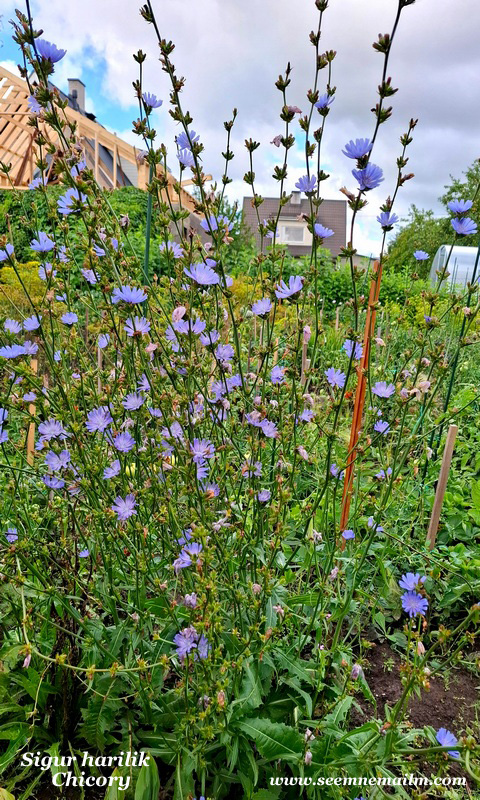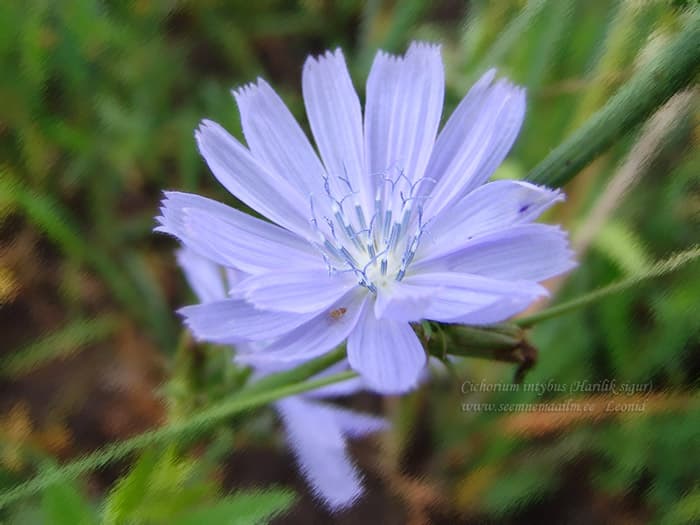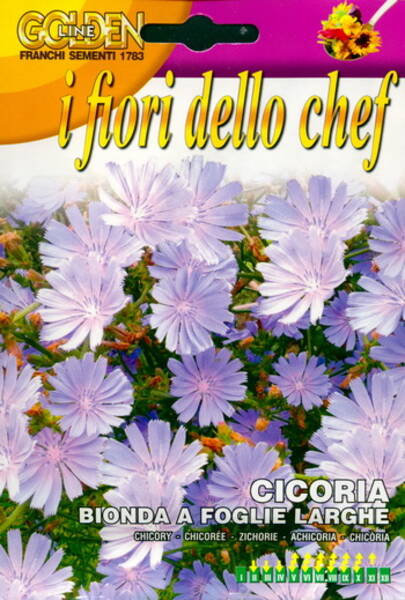A very hardy and useful perennial. Roots for making your own coffee - in the 2nd year after sowing!
Officinal (medicinal) plant.
Flowering: VII-IX.
Clim. zone: Z2-9.
Heigh: 80 cm.
Common chicory is a perennial herb from the Asteraceae family 1-1.5 m high with a taproot up to 1.5 m long. Basal leaves form a rosette.
This unpretentious plant, of course, should be planted in the garden - a lacy blue chicory cloud will greatly decorate the site.
It blooms with bright blue flowers, collected in baskets, from June to September. A wonderful honey plant.
Medicinal properties: the leaves and roots contain vitamins C and B1, carotene and chicoryic acid.
The high content of inulin contributes to the effectiveness of chicory in diabetes mellitus and metabolic disorders, liver diseases, and fat metabolism disorders.


Agricultural technology.
The soil must be deeply dug, it is prepared in the fall, and the seeds are sown in March-April. Shoots appear in 8-12 days.
Care: minimal watering, weeding, top dressing.
Young greens are obtained in the first year, and roots in the second.
Chicory, blue daisy, blue sailors, coffee chicory, coffee weed, common chicory, succory, wild chicory, wild succory.
Chicory Root Coffee: The washed roots are air-dried and roasted. After frying, they lose their bitterness and acquire a dark brown color and a delicate aroma.
Then they are ground in a coffee grinder.
* Decoctions of chicory root are used as a choleretic and diuretic. Chicory is also useful for raising the general tone, mood, improving blood composition. Recommended for diet food.
Chicory has bactericidal properties, heals wounds, and is also used for more serious skin conditions such as eczema and swelling.
Regular use of chicory helps a person cleanse his body of toxins, toxins, radioactive substances and heavy metals.
There is no caffeine in chicory roots and it does not have an exciting effect on the central nervous and cardiovascular systems. The dried roots of chicory are also added to the herbal tea mixture.
Raw chicory roots are stewed, fried, boiled, used in salads along with other vegetables. Bleached wild chicory leaves can be eaten stewed, boiled, fried.
For bleaching, young shoots and leaves are wrapped in sackcloth in spring so that no light penetrates to them, and sprinkle with earth from the sides. After 2-3 weeks, the leaves will bleach.












